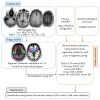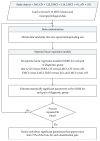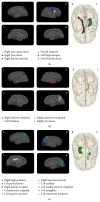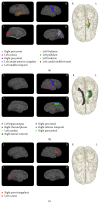Inclusion of Neuropsychological Scores in Atrophy Models Improves Diagnostic Classification of Alzheimer's Disease and Mild Cognitive Impairment
- PMID: 26101520
- PMCID: PMC4458535
- DOI: 10.1155/2015/865265
Inclusion of Neuropsychological Scores in Atrophy Models Improves Diagnostic Classification of Alzheimer's Disease and Mild Cognitive Impairment
Abstract
Brain atrophy in mild cognitive impairment (MCI) and Alzheimer's disease (AD) are difficult to demarcate to assess the progression of AD. This study presents a statistical framework on the basis of MRI volumes and neuropsychological scores. A feature selection technique using backward stepwise linear regression together with linear discriminant analysis is designed to classify cognitive normal (CN) subjects, early MCI (EMCI), late MCI (LMCI), and AD subjects in an exhaustive two-group classification process. Results show a dominance of the neuropsychological parameters like MMSE and RAVLT. Cortical volumetric measures of the temporal, parietal, and cingulate regions are found to be significant classification factors. Moreover, an asymmetrical distribution of the volumetric measures across hemispheres is seen for CN versus EMCI and EMCI versus AD, showing dominance of the right hemisphere; whereas CN versus LMCI and EMCI versus LMCI show dominance of the left hemisphere. A 2-fold cross-validation showed an average accuracy of 93.9%, 90.8%, and 94.5%, for the CN versus AD, CN versus LMCI, and EMCI versus AD, respectively. The accuracy for groups that are difficult to differentiate like EMCI versus LMCI was 73.6%. With the inclusion of the neuropsychological scores, a significant improvement (24.59%) was obtained over using MRI measures alone.
Figures





References
Publication types
MeSH terms
Grants and funding
LinkOut - more resources
Full Text Sources
Other Literature Sources
Medical

